Optimal Time for Consumers to Purchase Electronic Products with Consideration of Consumer Value and Eco-Efficiency
Abstract
1. Introduction
2. Methodology
2.1. Establishing the Consumer Value-Time Function
2.1.1. Establishing the Product Value-Time Function
- (1)
- Determine which product will be the evaluated or case product (Pe) and the reference product (Pf).
- (2)
- Identify key specifications of the product (m = 1, 2, … M).
- (3)
- Choose the most significant attributes or functions for each key specification and then determine their performance (Pem is the performance of the key specification m of the evaluated product).
- (4)
- Apply the weighting factor (wm) to express the contribution of each key specification.
- (5)
- Determine the key specifications progress vector. Use Equation (6) to find each attribute’s performance when the progress vector goes up (the larger the value, the better the performance). Use Equation (7) to find each attribute’s performance when the progress vector goes down (the lower the value, the better the performance). Pfm notation in the Equations (6) and (7) is the performance of key component m of the reference product.
- (6)
- Multiply the attribute’s performance by the weighting factor and sum the values of the specifications to obtain the total deterioration value of the product (Dp), as shown in Equation (8). Substituting Dp into Equation (4), we can obtain α:
2.1.2. Establishing the Brand Value-Time Function
2.2. Establishing the Product Cost-Time Function
2.3. Establishing the Consumer Eco-Efficiency-Time Function
2.4. TOPSIS
- (a)
- The distance between the alternative and the positive ideal solution is , which is shown in Equation (22):
- (b)
- The distance between alternative and the negative ideal solution is , which is shown in Equation (23):
3. Numerical Illustration
3.1. Calculation of Product Value
3.1.1. Calculation of Functional Value
3.1.2. Calculation of Brand Value
3.2. Calculation of Product Cost and Product Eco-efficiency
3.3. Investigation of the Most Appropriate Time of Purchase for Different Types of Products
- (1)
- Ultrabooks: Figure 9 shows that before time t = 0.64, the consumer value for case product B is similar to that of case product A. However, as time goes on, because the rate of deterioration of the product value VP(t) is larger than the rate of deterioration for the product purchasing cost CP(t), consumer value VC(t) is reduced. At the beginning of the second season, case product B shows a drastic deterioration in the consumer value, whereas case product A experiences a small amount of deterioration only by the fourth season (starting around t = 1.5). It can be seen from Figure 8 that Product B’s deterioration in product value VP(t) and purchasing cost CP(t) is larger than Product A’s. Since Product A has a higher functional value and brand value, its product functional value and purchasing cost are not significantly affected by the introduction of new products with new functions and specifications over time. Hence, it retains a relatively high consumer value. However, in the fourth season, it starts to show significant deterioration in product value due to the release of a new-generation product of the same brand.
- (2)
- Business Notebooks: It can be seen from Figure 11 that the consumer value of case product D is lower than that of product C after time t = 0.92. This is because the deterioration of the product value VP(t) is greater than the deterioration of the product purchasing cost CP(t), similar to the ultrabook case product B. Comparing the two types of products, we discovered that with time, the general products (C and D) exhibit lower value deterioration than the ultrabook products (A and B). This means products C and D brings a higher value to the consumers than products A and B.
- (3)
- Gaming Notebooks: It can be seen from Figure 13 that as time progresses, the deterioration of product purchasing cost CP(t) becomes greater than the deterioration of product value VP(t) for both case products E and F. Hence, after t = 0, consumer value VC(t) starts to decrease immediately. This can be explained since audio–visual-type products have high specifications and the difference between older and newly released products is small. However, the reduction in the sales price is still greater than the reduction in specifications and functions (product value); therefore, for high-specification notebook products, consumers should buy them immediately after the product release to get the maximum consumer value.
3.4. Suggested Purchasing Order for Different Groups of Consumers
- (1)
- Brand-conscious and function-conscious consumers have higher sensitivity to product brand, function, and specifications, as shown in Figure 15. Hence, case product C, which has higher brand value and specifications, will be their preference. Owing to the high deterioration of case product B’s function and specification, its ranking is lowered, whereas the rankings of case products E and F, which have higher functions and specifications, did not change significantly.
- (2)
- As for the price-conscious and cost-conscious consumers, shown in Figure 16, after the release of new products, the prices of the ultrabook products A and B dropped significantly. However, owing to case product A’s high brand value, it was able to better maintain consumer value over time and was still the preferred choice for consumers. Other types of products were priced highly and did not show significant price reductions. For consumers that place great importance on price and costs, these products were not as enticing and ranked low.
- (3)
- Environmentally conscious consumers, shown in Figure 17, are highly sensitive to product energy consumption performance; hence, owing to functional demands, audio–visual-type computers with high-energy consumption components are ranked last in terms of the preference of this group. Owing to the lightweight, convenience, and long-term use of ultrabook notebooks, their energy consumption performance is better than other types of products. Hence, they are the preferred choice for environmentally conscious consumer groups.
- (4)
- As for the indifferent group, shown in Figure 18, they have equal preference on product value, purchasing cost, and eco-efficiency. They can be used as a reference for purchasing by regular consumers. Changes in the ultrabook products happen at any time and the consumer value can reduce at any time. This is because in 2015, these types of notebook computers were the main products for every manufacturer and were affected by new products entering the market. This led to high deterioration in product value in the second season. However, owing to the low impact of new products, general-use notebook computers maintained their good purchasing ranking.
4. Discussion
5. Conclusions
Author Contributions
Funding
Acknowledgments
Conflicts of Interest
References
- United States Environmental Protection Agency (USEPA). Electronics Waste Management in the United States through 2009. Available online: http://www.epa.gov/wastes/conserve/materials/ecycling/docs/fullbaselinereport2011.pdf (accessed on 10 September 2016).
- Teehan, P.; Kandlikar, M. Comparing embodied Greenhouse Gas emissions of modern computing and electronics products. Environ. Sci. Technol. 2013, 47, 3997–4003. [Google Scholar] [CrossRef] [PubMed]
- Dodd, N.; Wolf, O. Development of European Eco-Label and Green Public Procurement Criteria for Desktop and Notebook Computers TECHNICAL REPORT, TASK 1 Scope and Definitions, (Draft) Working Document; European Commission Joint Research Centre, Institute for Prospective Technological Studies (IPTS): Seville, Spain, 2013. [Google Scholar]
- Tasci, A.D.A. A critical review of consumer value and its complex relationships in the consumer-based brand equity network. J. Destin. Mark. Manag. 2016, 5, 171–191. [Google Scholar] [CrossRef]
- Schult, D.E.; Barnes, B.E. Strategic Advertising Campaigns, 4th ed.; NTC Business Books: Lincolnwood, IL, USA, 1995. [Google Scholar]
- Zeithaml, V.A. Consumer perceptions of price, quality, and value: A means-end model and synthesis of evidence. J. Mark. 1998, 52, 2–22. [Google Scholar] [CrossRef]
- Hwang, C.L.; Yoon, K. Multiple Attribute Decision Making Methods and Applications: A State-of-the-Art Survey; Springer: New York, NY, USA, 1981. [Google Scholar]
- Deng, H.; Yeh, C.H.; Willis, R.J. Inter-company comparison using modified TOPSIS with objective weights. Comput. Oper. Res. 2000, 27, 963–973. [Google Scholar] [CrossRef]
- Abo-Sinna, M.A.; Amer, A.H. Extensions of TOPSIS for multi-objective large-scale nonlinear programming problems. Appl. Math. Comput. 2005, 162, 243–256. [Google Scholar] [CrossRef]
- Shih, H.S.; Shyur, H.J.; Lee, E.S. An extension of TOPSIS for group decision making. Math. Comput. Model. 2007, 45, 801–813. [Google Scholar] [CrossRef]
- Kotler, P. Marketing Management: The Millennium Edition; Prentice Hall: Upper Saddle River, NJ, USA, 2000. [Google Scholar]
- Roy, R.; Colmer, S.; Griggs, T. Estimating the cost of a new technology intensive automotive product: A case study approach. Int. J. Prod. Econ. 2004, 97, 210–226. [Google Scholar] [CrossRef]
- Adam, L.; Finn, W. Value in business markets: What do we know? Where are we going? Ind. Mark. Manag. 2005, 34, 732–748. [Google Scholar]
- Cooper, T. Inadequate life? evidence of consumer attitudes to product obsolescence. J. Consum. Policy 2004, 27, 421–449. [Google Scholar] [CrossRef]
- Yugang, Y.; Xiaoya, H.; Guiping, H. Optimal production for manufacturers considering consumer environmental awareness and green subsidies. Int. J. Prod. Econ. 2016, 182, 397–408. [Google Scholar]
- Kondoh, S.; Masui, K.; Hattori, M.; Mishima, N.; Matsumoto, M. Total performance analysis of product life cycle considering the deterioration and obsolescence of product value. Int. J. Prod. Dev. 2008, 6, 334–352. [Google Scholar] [CrossRef]
- Fang, Y.T.; Rau, H. Optimal Consumer Electronics Product Take-Back Time with Consideration of Consumer Value. Sustainability 2017, 9, 385. [Google Scholar] [CrossRef]
- Amazon. Price History Charts. 2016. Available online: https://camelcamelcamel.com/ (accessed on 10 February 2016).
- European Commission. Environment. Available online: http://ec.europa.eu/environment/waste/weee/index_en.htm (accessed on 30 September 2018).
- WBCSD. Eco-Efficiency Learning Model. Available online: https://docs.wbcsd.org/2006/08/EfficiencyLearningModule.pdf (accessed on 30 September 2018).
- Apple Official Website. Available online: https://support.apple.com/kb/SP714?viewlocale=zh_TW&locale=ja_JP (accessed on 20 September 2018).
- Kocpc. Available online: https://www.kocpc.com.tw/archives/13517 (accessed on 20 September 2018).
- Apple Official Website. Available online: https://support.apple.com/kb/SP715?locale=zh_TW&viewlocale=zh_TW (accessed on 20 September 2018).
- HP Official Website. Available online: https://support.hp.com/tw-zh/product/hp-elitebook-840-g2-notebook-pc/7343202/document/c04556099#AbT3 (accessed on 20 September 2018).
- MSI Official Website. Available online: https://tw.msi.com/Laptop/GT80-2QE-Titan-SLI/Specification (accessed on 20 September 2018).
- ASUS Official Website. Available online: https://www.asus.com/tw/Laptops/ROG-G751JY/specifications/ (accessed on 20 September 2018).
- ASUS Official Website. Available online: https://www.asus.com/tw/Laptops/ASUS-ZenBook-UX330UA/specifications/ (accessed on 20 September 2018).
- Amazon. Available online: https://www.amazon.com/HP-13-ab016nr-Notebook-i5-7200U-Windows/dp/B01LZKY7RB (accessed on 20 September 2018).
- DELL Official Website. Available online: https://www.dell.com/au/partner/p/xps-13-9360-laptop/pd (accessed on 20 September 2018).
- Amazon. Available online: https://www.amazon.com/Lenovo-Ideapad-720S-13IKB-3840x2160-Laptop/dp/B07B1227CT (accessed on 20 September 2018).
- Geekbench 3 Software—MacBook Air Benchmarks. Available online: http://www.primatelabs.com/blog/2013/06/macbook-air-benchmarks/?utm_source=feedburner&utm_medium=feed&utm_campaign=Feed%3A+primatelabsblog+%28Primate+Labs+Blog%29 (accessed on 5 February 2016).
- PassMark Software—PC Benchmark and Test Software. Available online: http://www.cpubenchmark.net/ (accessed on 10 February 2016).
- IHS iSuppli, Teardowns & Cost Benchmarking. Available online: https://technology.ihs.com/Categories/450461/teardowns-cost-benchmarking (accessed on 10 February 2016).
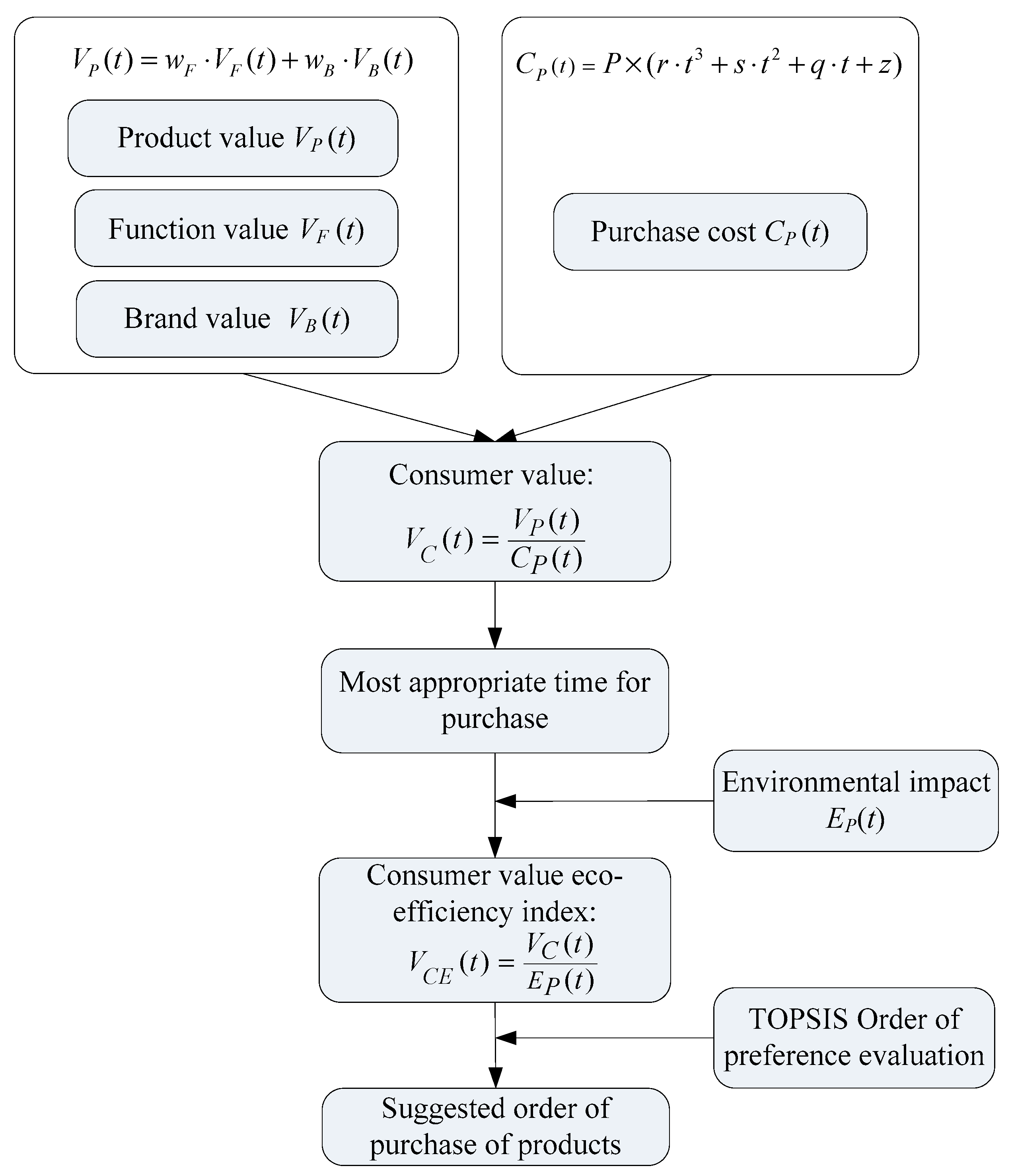
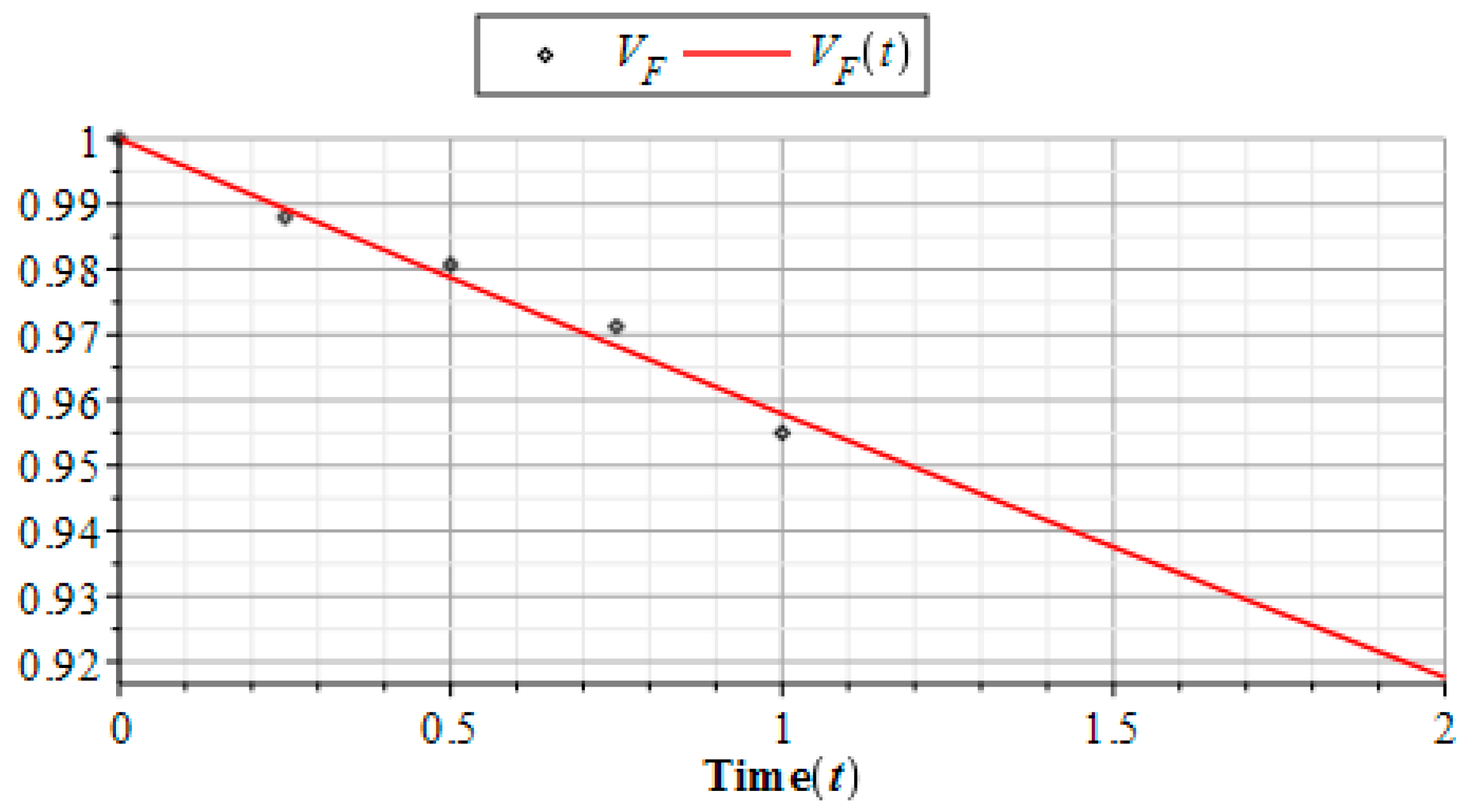
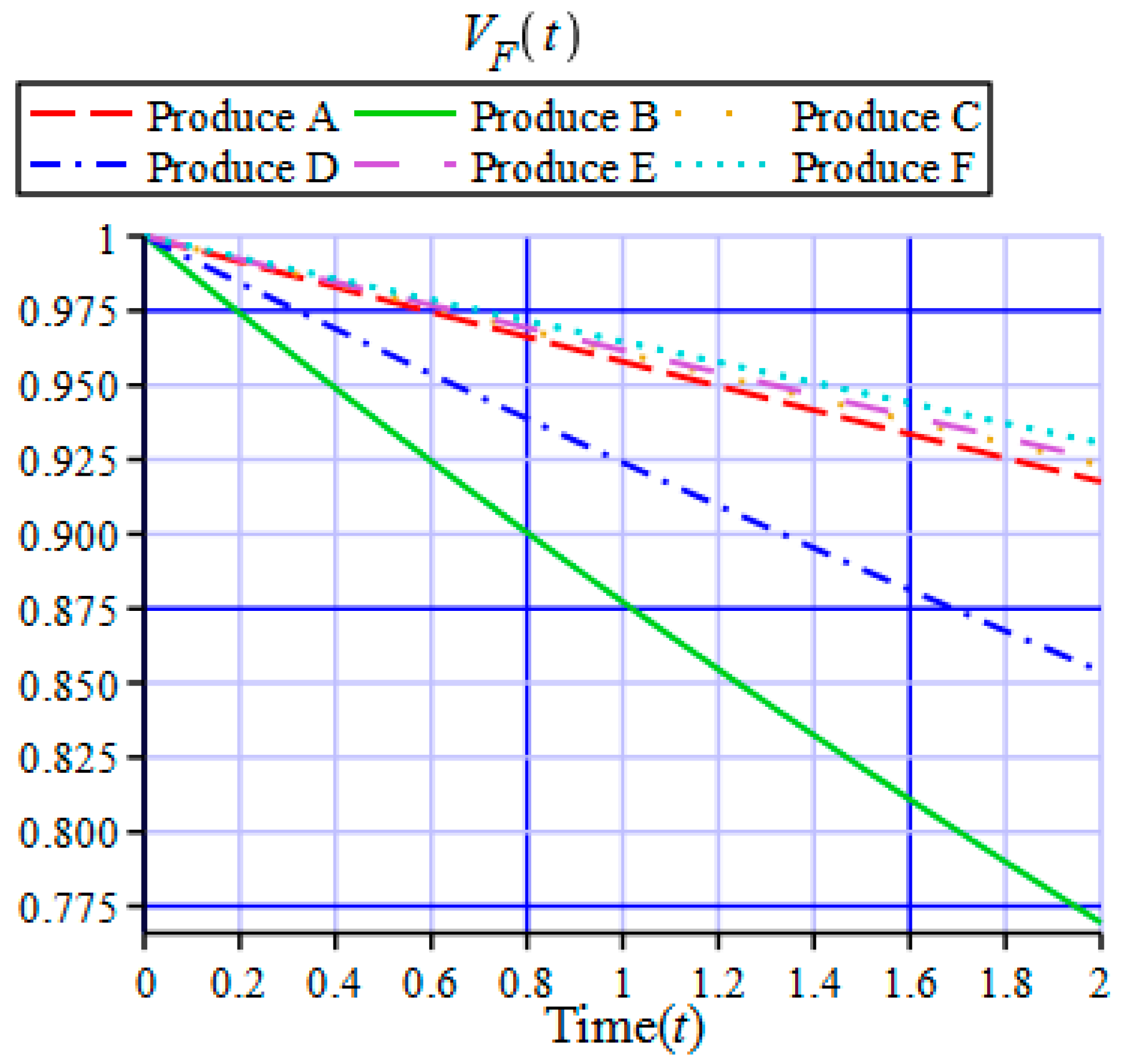
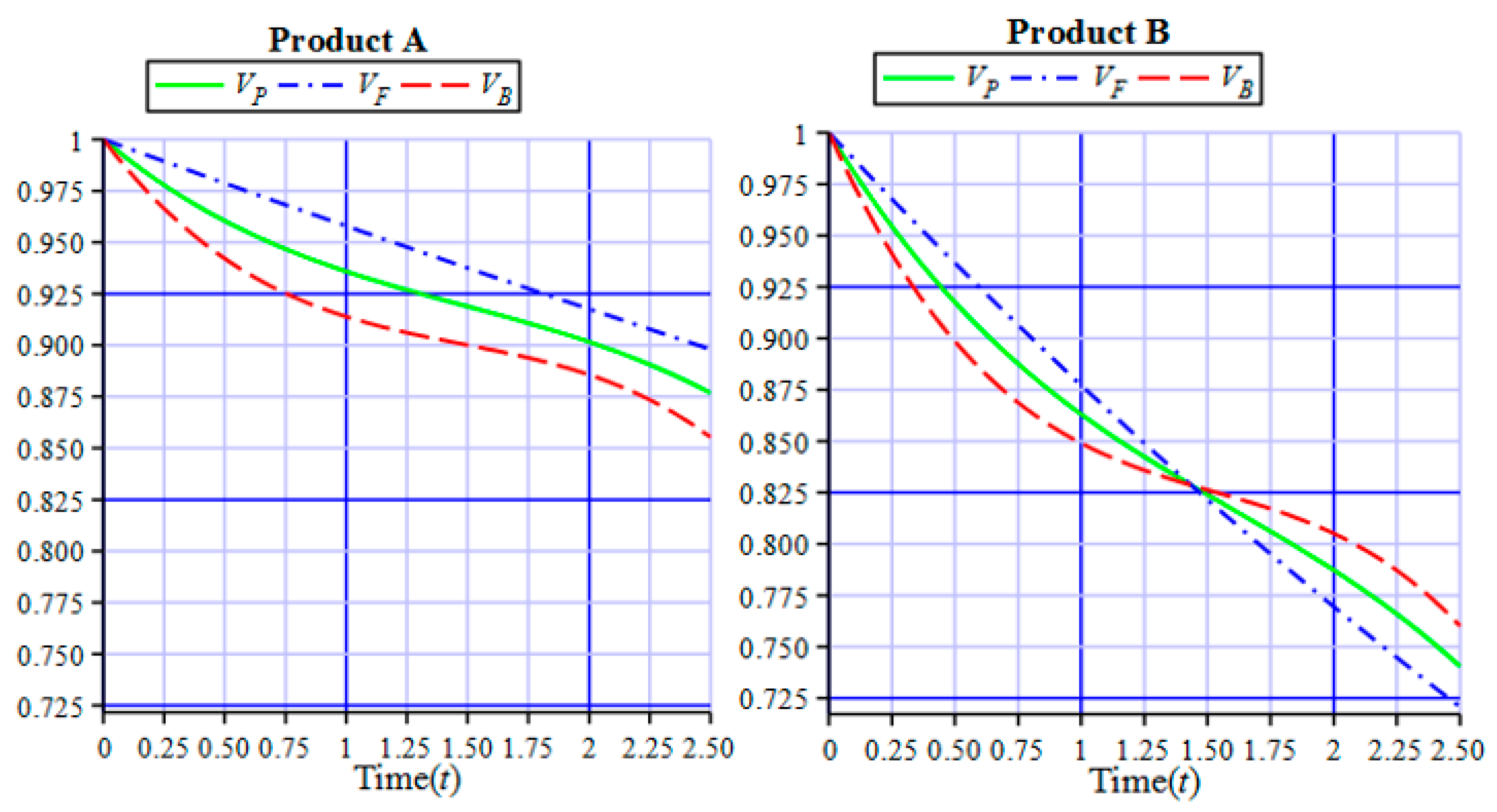




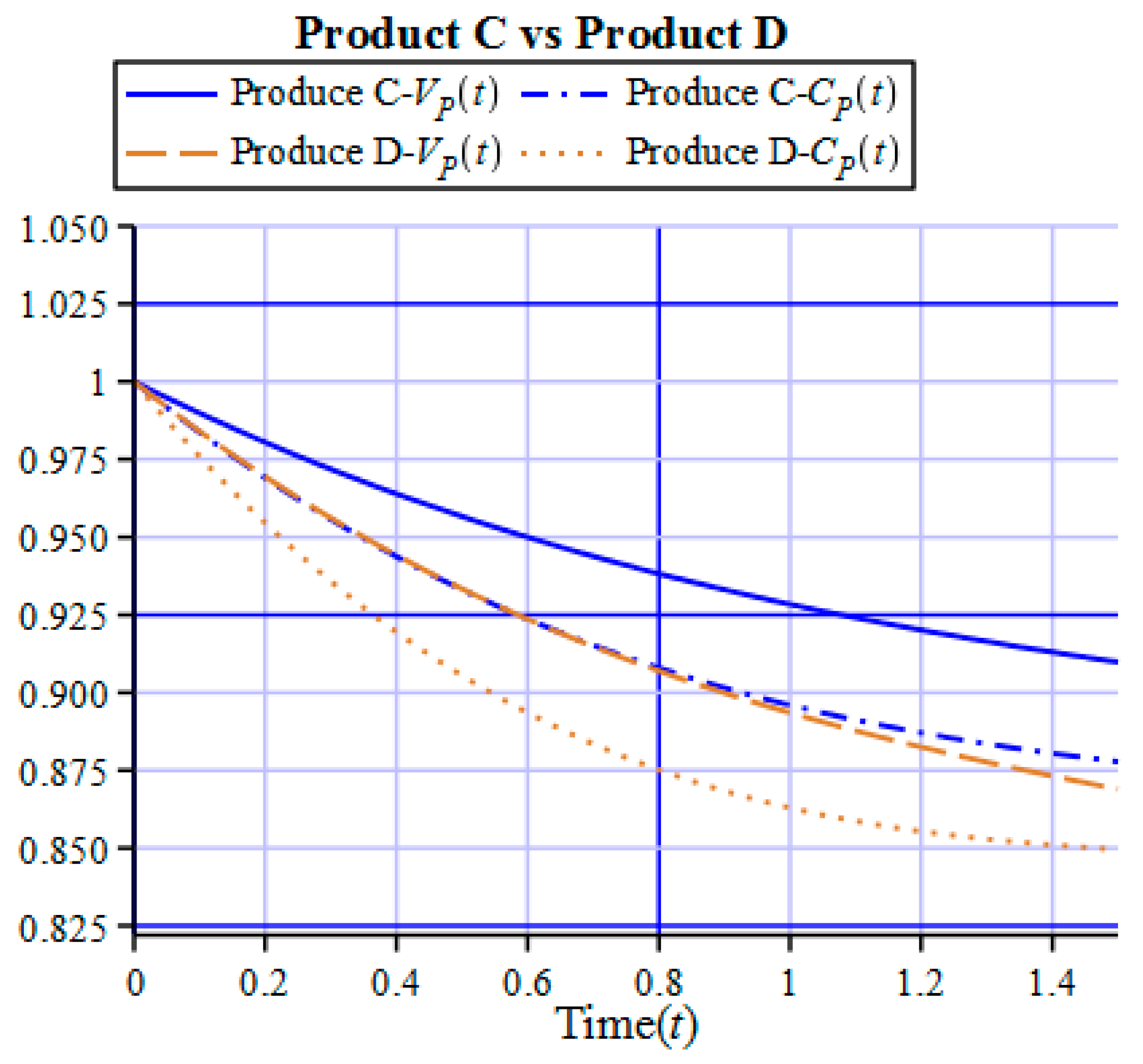




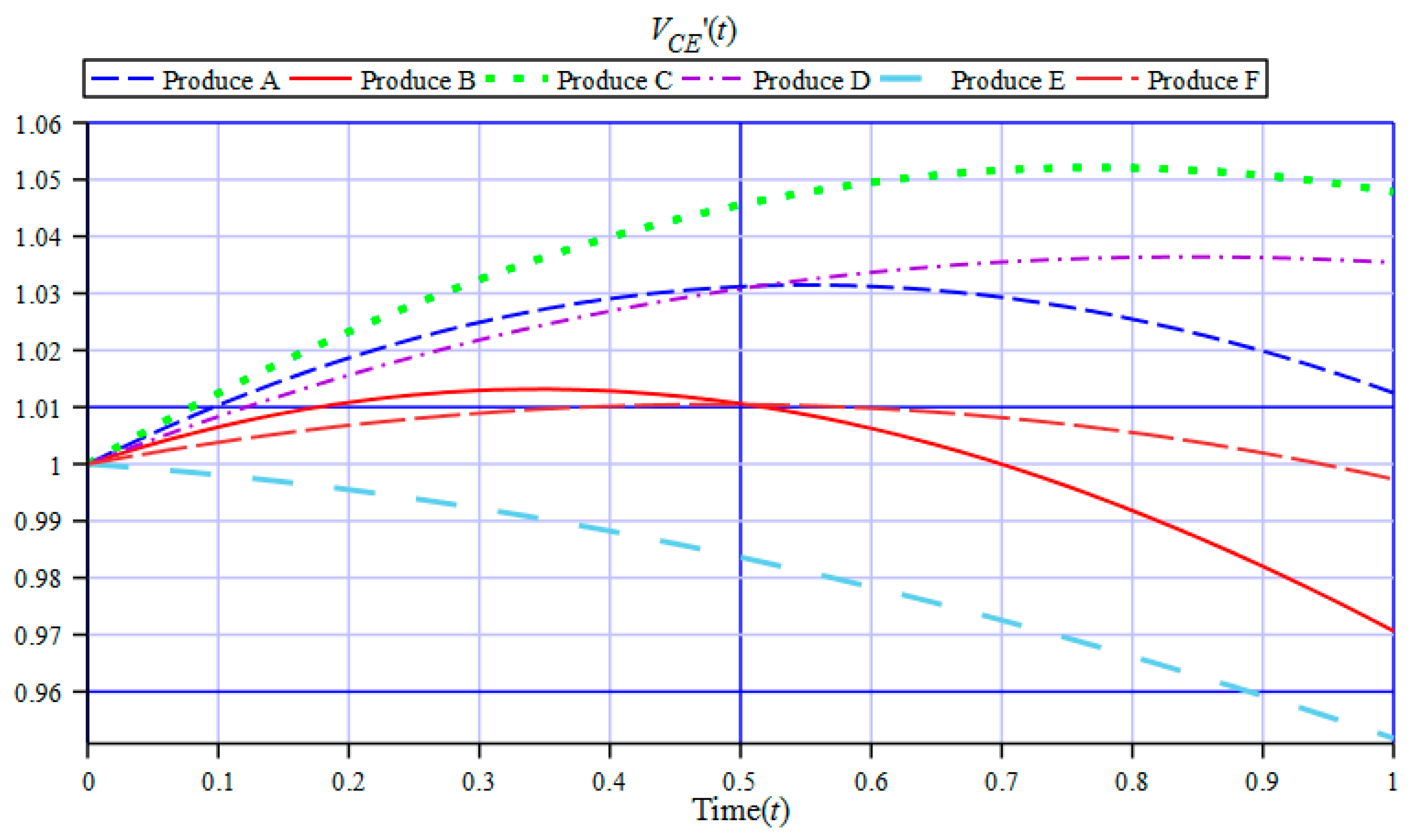


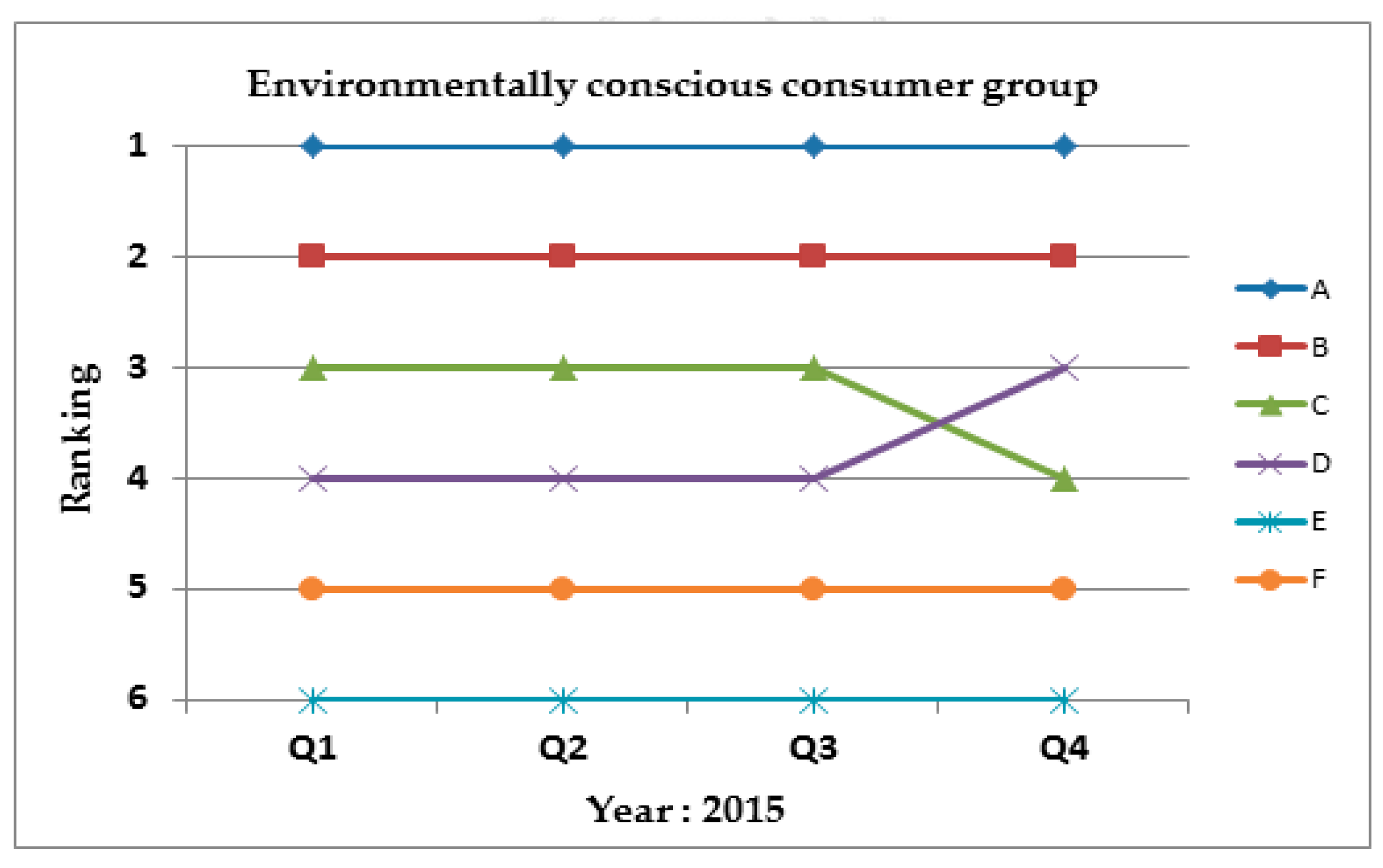

| Type | Screen Size | Price Range (US$) | Description |
|---|---|---|---|
| Ultrabook | 13″ | 900–1700 | Light, portable |
| Business Notebook | 14″~15″ | 500–2100 | Ordinary specs, office use |
| Gaming Notebook | 16″ (inclusive) and above | 600–4000 | Advanced specs, professional use |
| Ultrabook (A) | Ultrabook (B) | Business Notebook (C) | Business Notebook (D) | Gaming Notebook (E) | Gaming Notebook (F) | |
|---|---|---|---|---|---|---|
| Introduction date | 2015/3/9 | 2015/2/25 | 2015/3/9 | 2015/3/31 | 2015/3/30 | 2015/3/9 |
| Processor Type (Speed) | Intel Core i5 6250U | Intel Core i5 6200U | Intel Core i7 5557U | Intel Core i5-5200U | Intel Core i7 5950HQ | Intel Core i7 4860HQ |
| RAM Type (Speed) | DDR3 1600 MHz 4 GB | DDR3 1600 MHz 4 GB | DDR3 1866 MHz 8 GB | DDR3 1600 MHz 8 GB | DDR3L 32 GB | DDR3L 16 GB |
| Video Card | Intel HD Graphics 6000 | Intel HD Graphics 520 | Intel HD Graphics6100 | Intel HD Graphics 5500 | Intel HD Graphics 6000 | Intel HD Graphics 520 |
| Display (Resolution) | 13.3″ (1440 × 900) | 13.3″ (1440 × 900) | 15.6″ (3840 × 2160) | 15.6″ (1600 × 900) | 18.4″ (1920 × 1080) | 17.3″ (1920 × 1080) |
| Hard Drive | SSD 128 G | SSD 128 G | SSD 256 GB | 500 G 7200RPM | 1TB HDD 7200 + 512 G SSD | 1TB HDD 7200 + 256 G SSD |
| Battery life | 12 h | 8 h | 9.6 h | 10 h | 6 h | 6 h |
| Dimensions (H × W × D) | 1.7 × 32.5 × 22.7 cm | 1.23 × 32.4 × 22.6 cm | 1.8 × 31.4 × 21.9 cm | 2.1 × 33.9 × 23.7 cm | 4.9 × 45.6 × 33 cm | 2 × 41.6 × 31.8 cm |
| System weight | 1.35 kg | 1.2 kg | 1.58 kg | 1.55 kg | 4.8 kg | 4.8 kg |
| Power consumption | 45 W | 65 W | 85 W | 90 W | 330 W | 230 W |
| Original price | 1299 US$ | 1099 US$ | 1580 US$ | 1530 US$ | 3360 US$ | 3160 US$ |
| Time | Season 1 | Season 2 | Season 3 | Season 4 |
|---|---|---|---|---|
| Code name | L1 | L2 | L3 | L4 |
| Type | Ultrabook (13″) | Ultrabook (13″) | Ultrabook (13″) | Ultrabook (13″) |
| Product model | ASUS Zenbook UX330CA [27] | HP ENVY 13-ab016nr [28] | Dell XPS 13-9360 [29] | Lenovo 720S [30] |
| Processor Type (Speed) | Intel Core i5 6200U | Intel Core i5 7200U | Intel Core i7 7300U | Intel Core i7-7500U |
| RAM Type (Speed) | DDR3 1600 MHz 8 GB | DDR3 1600 MHz 8 BG | DDR3 1866 MHz 8 GB | DDR3 1600 MHz 8 GB |
| Video Card | Intel HD Graphics 520 | Intel HD Graphics 600 | Intel HD Graphics 620 | Intel HD Graphics 620 |
| Display (Resolution) | 13.3″ (1920 × 1080) | 13.3″ (3200 × 1800) | 13.3″ (3200 × 1800) | 13.3″ (3840 × 2160) |
| Hard Drive | SSD 128 G | SSD 256 G | SSD 128 GB | SSD 512 GB |
| Battery life | 10 h | 12 h | 12 h | 16 h |
| Dimensions (H × W × D) | 1.36 × 32.3 × 22.2 cm | 1.1 × 30.4 × 21.6 cm | 1.85 × 30.4 × 22.6 cm | 1.09 × 31.3 × 21.8 cm |
| System weight | 1.2 kg | 1.18 kg | 1.2 kg | 1.1 kg |
| Power consumption | 65 W | 50 W | 50 W | 45 W |
| Specification | Characteristics | Unit | Pem | Pfm | Dpm | Wm | Dp |
|---|---|---|---|---|---|---|---|
| CPU/RAM | Geekbench Performance 1 | Score ↑ | 7700 | 8150 | 0.94 | 0.34 | 0.988 |
| Graphic Card | PassMark G3D Rating 2 | Score ↑ | 2230 | 2400 | 0.93 | 0.13 | |
| Display | Resolution | Pixel ↑ | 1,296,000 | 1,296,000 | 1 | 0.17 | |
| Hard Drive | PassMark Disk Rating 3 | Score ↑ | 6500 | 6500 | 1 | 0.09 | |
| USB Ports | Transfer speed | Gbps ↑ | 10 | 10 | 1 | 0.01 | |
| Battery | Max standby time | Hours ↑ | 12 | 10 | 1.20 | 0.15 | |
| Dimensions | Thickness | cm ↓ | 1.7 | 1.36 | 0.08 | 0.03 | |
| Weight | Weight | kg ↓ | 1.35 | 1.2 | 0.89 | 0.09 |
| Case Product | Ultrabook | Business Notebook | Gaming Notebook | |||
|---|---|---|---|---|---|---|
| A | B | C | D | E | F | |
| Price | US$ 1299 | US$ 1099 | US$ 1580 | US$ 1530 | US$ 3360 | US$ 3160 |
| Material costs + Manufacturing costs | US$ 618 | US$ 709 | US$ 822 | US$ 1055 | US$ 1429 | US$ 1239 |
| Brand value | 2.1 | 1.55 | 1.92 | 1.45 | 2.35 | 2.55 |
| Case Product | Product Energy Consumption Index Ep | |||
|---|---|---|---|---|
| t = Season 1 | t = Season 2 | t = Season 3 | t = Season 4 | |
| A | 0.6923 | 0.9 | 0.9 | 1 |
| B | 1 | 1.3 | 1.3 | 1.4444 |
| C | 0.9444 | 0.7083 | 0.7083 | 0.8095 |
| D | 1 | 0.75 | 0.75 | 0.8571 |
| E | 1.5 | 1.5 | 1.8333 | 1.8333 |
| F | 1.0454 | 1.0454 | 1.2777 | 1.2777 |
| Case Product | Ultrabook | Business Notebook | Gaming Notebook | |||
|---|---|---|---|---|---|---|
| A | B | C | D | E | F | |
| Most appropriate time to purchase (year) | 0.55 | 0.35 | 0.77 | 0.84 | 0 | 0.48 |
| Normalized consumer value eco-efficiency index | 1.03 | 1.01 | 1.05 | 1.04 | 1 | 1..01 |
| Consumer Group | Product Value Weight (WVP) | Product Cost Weight (WCP) | Product Energy Consumption Weight (WEP) |
|---|---|---|---|
| Brand and function conscious | 0.5 | 0.25 | 0.25 |
| Price and cost conscious | 0.25 | 0.5 | 0.25 |
| Environmentally conscious | 0.25 | 0.25 | 0.5 |
| Indifferent | 0.33 | 0.33 | 0.33 |
| Case Product | S+ | S− |
|---|---|---|
| A | 0.007392 | 0.111268 |
| B | 0.043393 | 0.069972 |
| C | 0.007017 | 0.109144 |
| D | 0.011107 | 0.103737 |
| E | 0.111541 | 0.009302 |
| F | 0.050359 | 0.063179 |
| Case Product | C* | Order |
|---|---|---|
| A | 0.937705 | 2 |
| B | 0.617229 | 4 |
| C | 0.939591 | 1 |
| D | 0.903288 | 3 |
| E | 0.076979 | 6 |
| F | 0.556460 | 5 |
© 2018 by the authors. Licensee MDPI, Basel, Switzerland. This article is an open access article distributed under the terms and conditions of the Creative Commons Attribution (CC BY) license (http://creativecommons.org/licenses/by/4.0/).
Share and Cite
Rau, H.; Fang, Y.-T. Optimal Time for Consumers to Purchase Electronic Products with Consideration of Consumer Value and Eco-Efficiency. Sustainability 2018, 10, 4664. https://doi.org/10.3390/su10124664
Rau H, Fang Y-T. Optimal Time for Consumers to Purchase Electronic Products with Consideration of Consumer Value and Eco-Efficiency. Sustainability. 2018; 10(12):4664. https://doi.org/10.3390/su10124664
Chicago/Turabian StyleRau, Hsin, and Yi-Tse Fang. 2018. "Optimal Time for Consumers to Purchase Electronic Products with Consideration of Consumer Value and Eco-Efficiency" Sustainability 10, no. 12: 4664. https://doi.org/10.3390/su10124664
APA StyleRau, H., & Fang, Y.-T. (2018). Optimal Time for Consumers to Purchase Electronic Products with Consideration of Consumer Value and Eco-Efficiency. Sustainability, 10(12), 4664. https://doi.org/10.3390/su10124664





